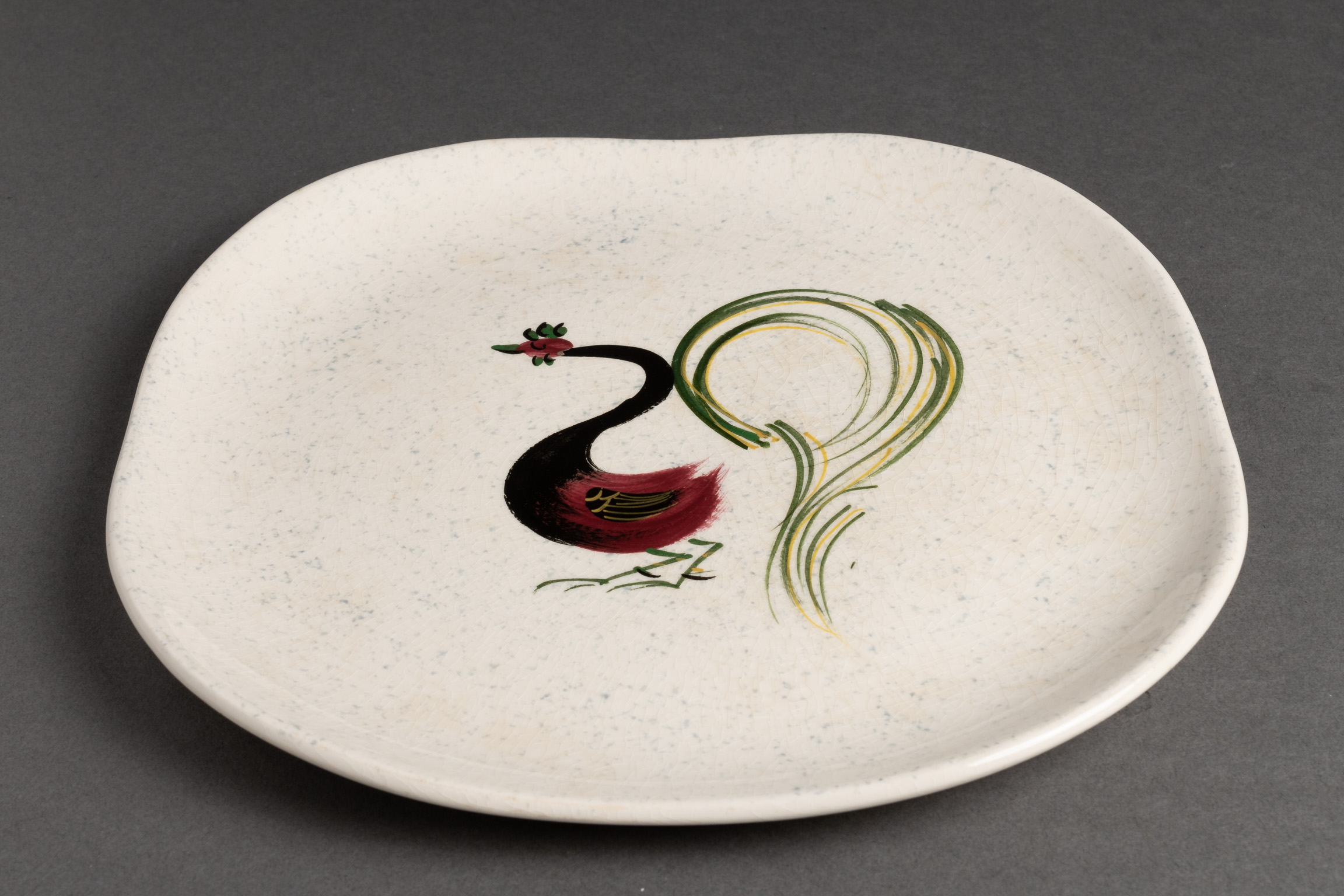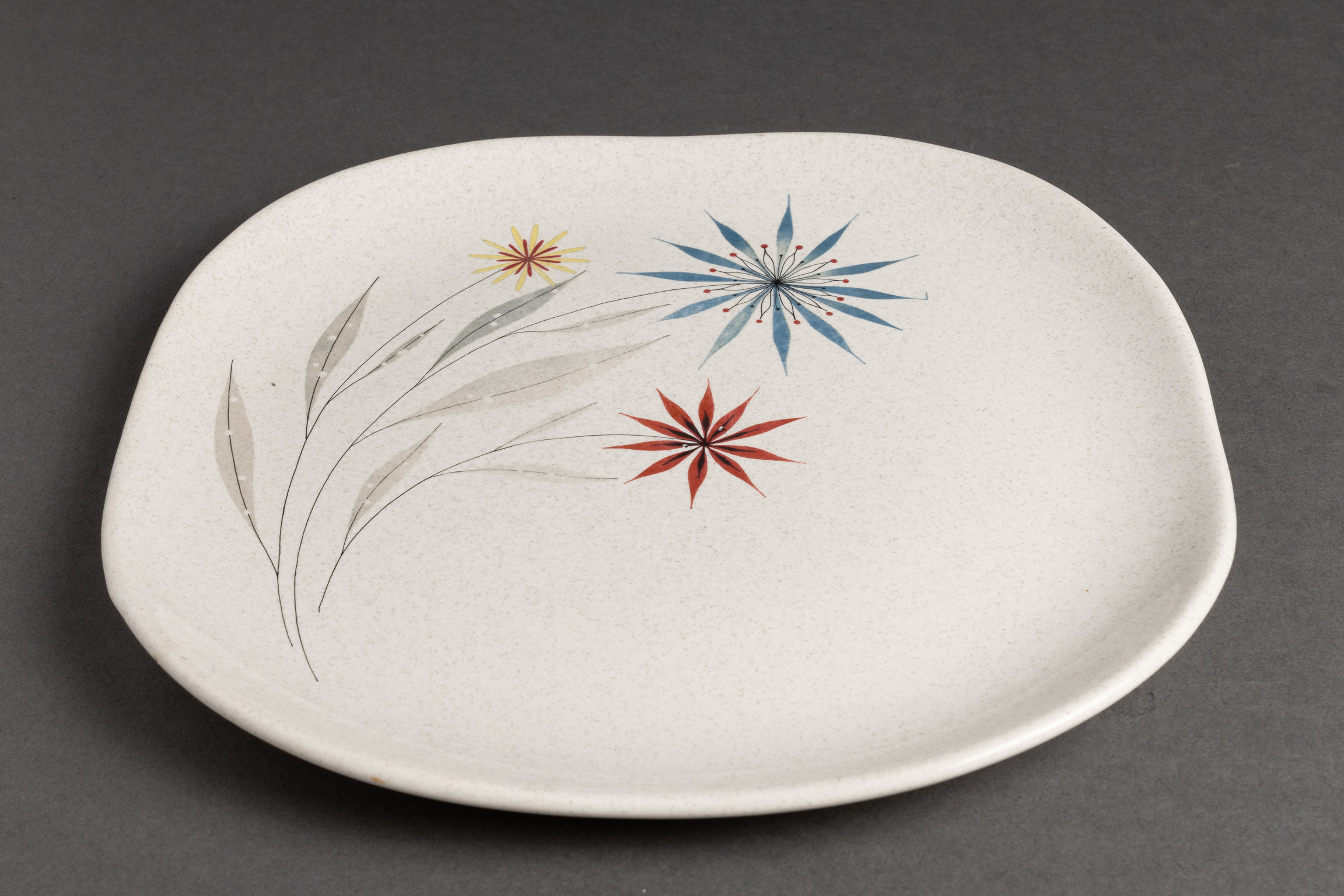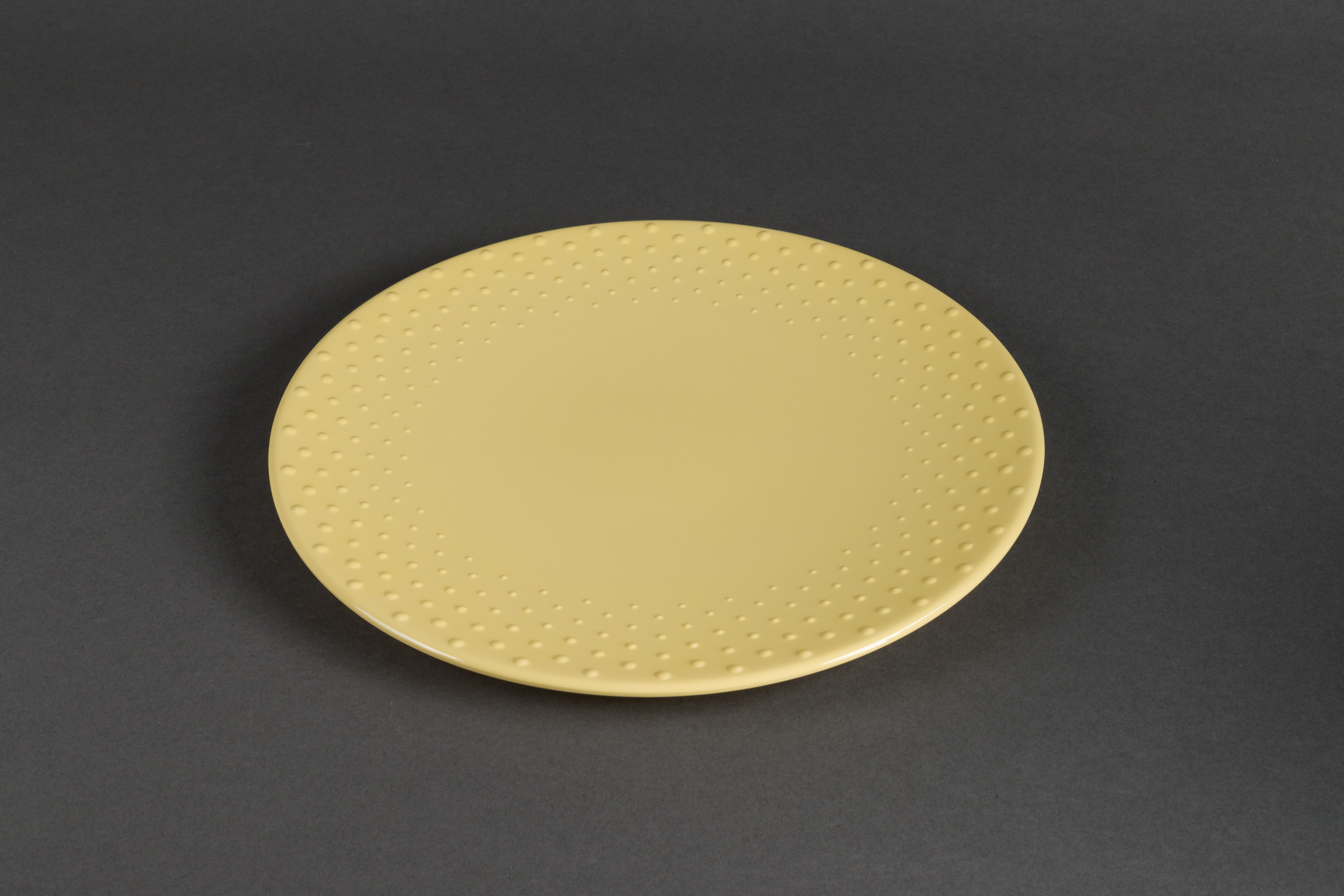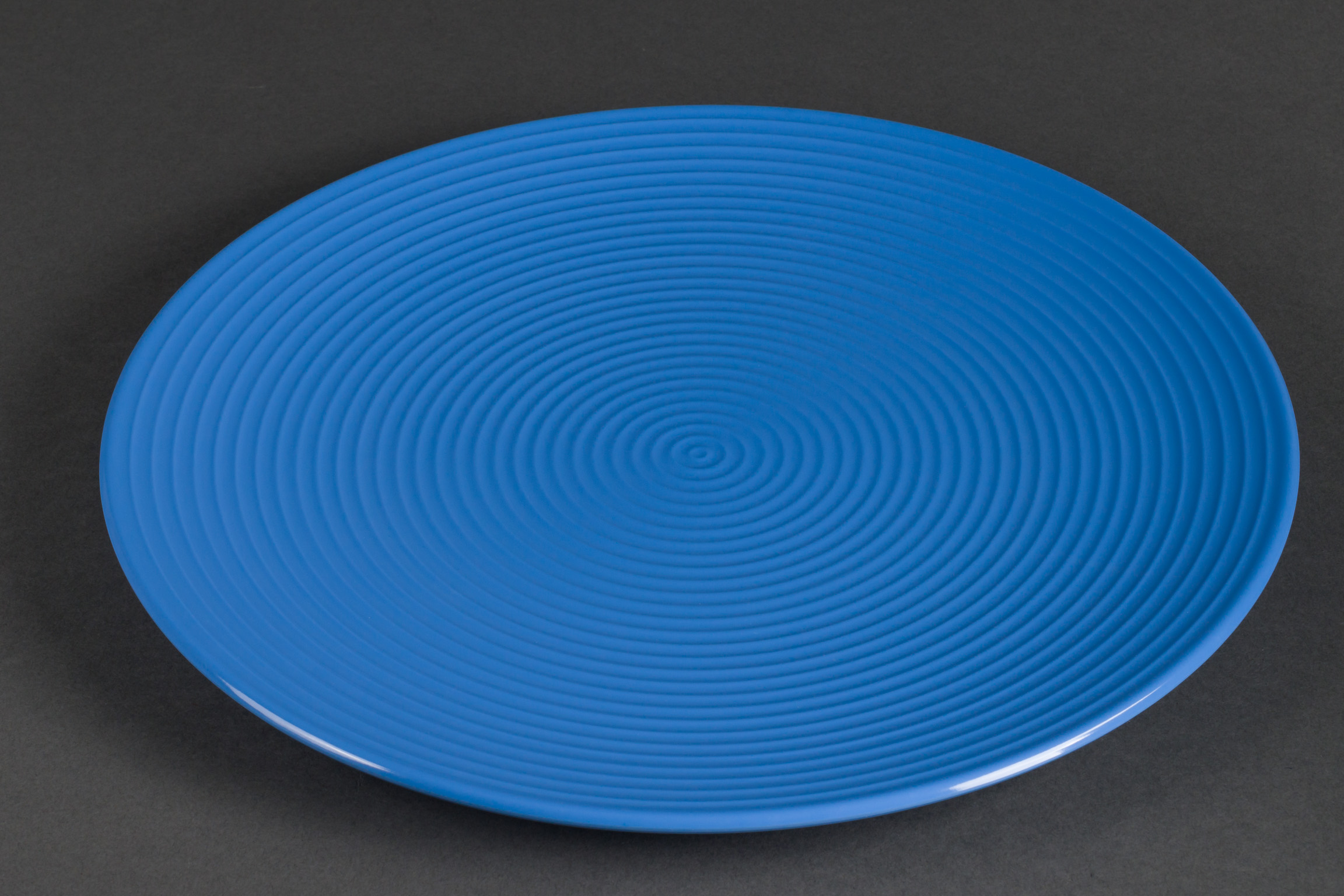Post-World War II consumer culture was notable for a proliferation of "choice". The kitchen was reimagined as a sociable space, with open-concept floor plans and colourful appliances and cookware. Before this, the kitchen was separated from the social activities of the home with walls closing off cooking smells, sounds, and sights. Open spaces and bold colours provided a welcome contrast to wartime austerity. Consumers did not need much encouragement to adopt at least some of the accouterments of the idealized post-war lifestyle being portrayed by advertisers.1
Week one of this month’s posts features earthenware plates in the Las Vegas and Chanticleer dinnerware series, designed by Mary Small Einstein Wright and her husband, industrial designer Russel Wright. Earthenware is porous and natural pottery made durable by glazing, creating a waterproof exterior and characteristic sheen.2 The Las Vegas dinner plate features a speckled white and grey background that acts to accentuate the illustration of three flowers in primary colours yellow, blue, and red. Chanticleer dinner service features a rooster artistically rendered in black, red, green, and yellow. Despite being mass-manufactured, both series share a handmade sensibility that can be attributed to the qualities of the material of which they’re made.


Etienne Capacchione, xDX Collection, Carleton University.
In the final week of this month’s posts, the influence of 1950s design sensibilities can be seen in the chic, contemporary aesthetic of Willa Wong’s Sonoma tableware. The Sonoma series, designed in the early 2000s, was made of melamine, a plastic originally marketed in the late 1950s with the promise to enhance carefree living.3 When melamine's claim to “indestructibility” did not live up to expectations, it lost favour with consumers who returned to buying and using ceramic dinnerware.4 In the 1960s, melamine returned with a claim to be washable in dishwashers, unlike porcelain or glass dinnerware which was only suitable for handwashing.5 This gave consumers the choice between the convenience provided by brightly coloured plastic dishes, or the elegance of earthenware, fine china, and glass.
While melamine had been re-engineered to withstand dishwasher use, it fell out of favour again with the introduction of microwaves and the discovery that melamine dishes released chemical compounds into foods heated in them. In the 2000s, testing by the FDA revealed that melamine migration into foods and drinks only occurred in acidic foods under exaggerated heat conditions, meaning that melamine was non-toxic when used properly as serving dishes.6 Due to its resistance to breakage and affordability, melamine tableware remained popular for casual and outdoor dining.
Willa Wong’s melamine Sonoma design avoided the representational themes of earlier melamine tableware, featuring instead bright primary colours and dimensional textures and patterns.


In anticipation of the launch of the xDX ResearchSpace, this month’s social media posts look at some examples of the different materials—including ceramic and melamine—used in the design and manufacture of kitchenwares held at xDX partner institutions.
Siah McTavish, Public History Placement, York University
Aviva Weizman, Lead RA
Jan Hadlaw, xDX Project PI
Footnotes
1. Thomas Hine, Populuxe (New York: Alfred A. Knopf, 1986), 25, 64–65, https://archive.org/details/populuxe0000hine/page/64/mode/2up?q=domestic.
2. Dutch Delftware, “Types of Ceramic: An Overview of Earthenware, Stoneware and Porcelain,” last modified July 17, 2019, https://delftsaardewerk.nl/en/learn/193-types-of-ceramic-an-overview-of-earthenware-stoneware-and-porcelain.
3. Fisher, Tom. “A World of Colour and Bright Shining Surfaces: Experiences of Plastics after the Second World War.” Journal of Design History 26, no. 3 (2013): 292. http://www.jstor.org/stable/43831508.
4. Ibid., 293, 297.
5. Charles L. Venable et al., “Dishes and More Dishes: Tableware in the Home,” China and Glass in America 1880-1980: From Tabletop to TV Tray (Dallas, Texas: Dallas Museum of Art: New York, New York: distributed by H.N. Abrams, 2000), 94.
6. “Melamine in Tableware Questions and Answers.” U.S. Food and Drug Administration. https://www.fda.gov/food/economically-motivated-adulteration-food-fraud/melamine-tableware-questions-and-answers

